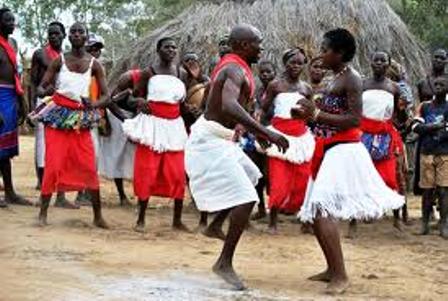
The Mijikenda are coastal bantus that originated from Shungwaya, a region in southern Somalia around the 17th centuary and setterd along the coastal region of Kenya in their fortified villages called the “kaya”. The Giriama are the largest of them. They mostly inhabit the area of Mariakani and Kaloleni in Kilifi County. They have different clans which include: Thoya, Mweni, Nyundo, Nyale, and many more. The language they speak is reffered to as “Kigiriama”.
ECONOMIC PURSUITS
The Giriama community practiced farming and reared cows, sheep and goats. They grew maize, cassava, mille with coconut and cassava as their main cash crop. They also involved themselves in fishing in the Indian Ocean along the creeks. They also took coastal trade goods with them, like iron for making weapons and tools and also exchanged them for beads and cloths from overseas.
SKILLED CRAFTSMEN
There were skilled craftsmen who produced useful ion implements that were used by the community. They produced ornaments like chains, necklaces, earrings and bangles that were sometimes worn as charms.
SOCIAL STRUCURE
Traditionally, the men were responsible food and protection to the family, while the mothers were left to domestic responsibilities. The elders always emphasized on the importance of obedience of the young to them. The elders controlled all the community resources which included their land, bride-wealth and trade. Sons were only allowed to inherit lands after the deaths of their fathers.
POLITICAL STRUCTURE
The Giriama’s were divided into clans which were headed by council of elders called the “Kambi” who were responsible for all communial decisions as well as settling disputes among clan members. All the major decisions made by the Kambi were unanimous and binding to all members.

